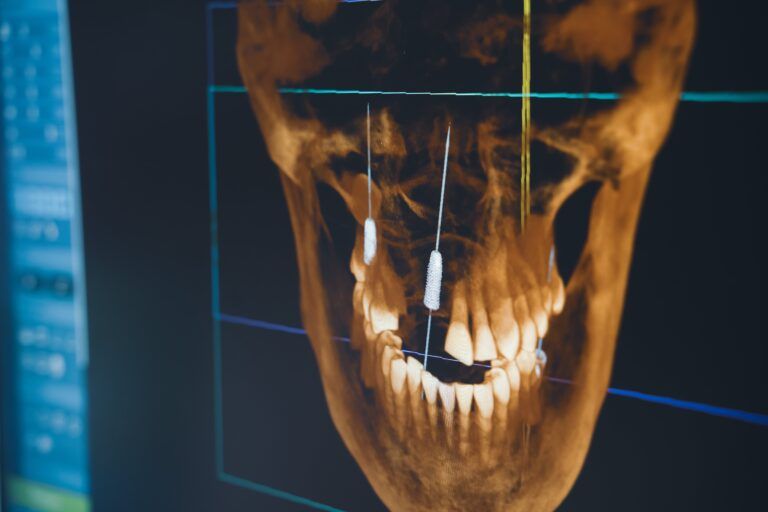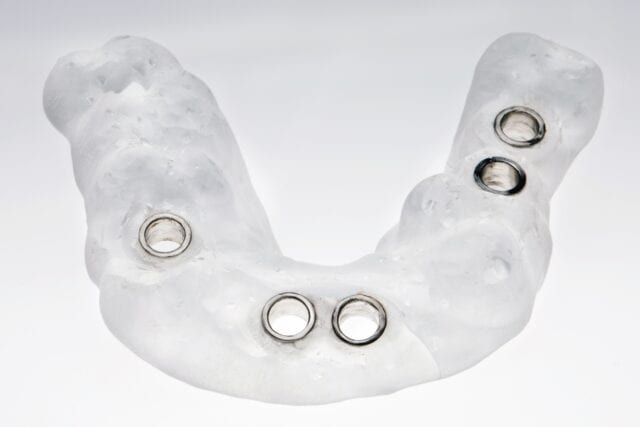When it comes to modern dentistry, advancements in technology have revolutionized the way we approach various dental procedures. One remarkable innovation that has transformed the field is guided dental implant surgery. This technique combines precision, computerized planning, and minimally invasive procedures to offer patients a more comfortable and efficient way to replace missing teeth. In this blog, we will explore the concept of guided dental implant surgery, its benefits, and why it has become a game-changer in restorative dentistry.
Understanding Guided Dental Implant Surgery:

Dental implants are an increasingly popular solution for replacing missing teeth. They provide a stable and natural-looking replacement option, as they mimic the function and appearance of natural teeth. However, traditional implant placement procedures relied heavily on the dentist’s skill and experience, sometimes resulting in variations in outcomes.
Guided dental implant surgery introduces a new level of accuracy and predictability to the process. It involves the use of advanced imaging technology such as cone-beam computed tomography (CBCT) and computer-aided design (CAD) software to create a 3D virtual model of the patient’s mouth. This model allows the dentist to plan the implant placement with unparalleled precision.
The Benefits of Guided Dental Implant Surgery:
Enhanced Accuracy:
One of the most significant advantages of guided implant surgery is its accuracy. The virtual 3D model helps the dentist identify the optimal location for implant placement based on factors like bone density, neighboring teeth, and the patient’s bite. This results in better implant alignment and improved functional and aesthetic outcomes.
Minimally Invasive:
Guided surgery is often minimally invasive compared to traditional implant placement. The pre-planned nature of the procedure allows for smaller incisions and reduced trauma to the surrounding tissues. This results in quicker recovery times, less postoperative discomfort, and a decreased risk of complications.
Predictable Results:
With the ability to simulate the entire procedure digitally before performing it on the patient, guided dental implant surgery offers a level of predictability that was previously hard to achieve. This not only boosts the patient’s confidence but also increases the success rate of the implants.
Shorter Procedure Times:
Guided surgery streamlines the implant placement process. Since the planning phase is thorough and meticulous, the actual surgery tends to be quicker. This benefits both the patient and the dentist, making the procedure more efficient.
Customization:
Each patient’s mouth is unique, and guided dental implant surgery allows for a high degree of customization. The dentist can select the appropriate implant size, angulation, and depth based on the patient’s specific anatomy, leading to optimal functional and aesthetic results.
The Guided Dental Implant Procedure:
The guided dental implant procedure involves several key steps:
Initial Consultation
Your journey begins with an initial consultation with your dentist or oral surgeon. During this appointment, your oral health will be assessed, and the dentist will determine if you are a suitable candidate for dental implants. They will discuss your medical history, perform a clinical examination, and may order diagnostic imaging, such as a cone beam computed tomography (CBCT) scan, to assess your bone structure and oral anatomy.
Treatment Planning:
Based on the diagnostic information, your dentist will create a personalized treatment plan. They will discuss your goals, explain the procedure, and address any concerns you might have. If guided implant surgery is recommended, your dentist will explain how this technology will be used to ensure precise implant placement.
CBCT Scan and Digital Model Creation:
If guided surgery is chosen, you will undergo a CBCT scan to create a detailed 3D digital model of your mouth. This will allow your dentist to assess the quality and quantity of bone, plan the ideal implant positions, and design the restoration for the best functional and aesthetic outcome.
Virtual Treatment Planning:
Using specialized software, your dentist will virtually plan the entire implant procedure on the 3D digital model of your mouth. They will determine the optimal implant size, angle, and placement based on your unique anatomy and restorative goals. This planning ensures accuracy and predictability during the surgery.

Surgical Guide Fabrication:
A surgical guide will be created based on the virtual treatment plan. This guide is a custom-made template that fits over your teeth and helps the dentist precisely position the implants during surgery. The guide has holes or sleeves that guide the drills to the predetermined implant positions.
Implant Placement:
On the day of the surgery, you’ll arrive at the dental office or clinic. Local anesthesia will be administered to ensure your comfort during the procedure. The surgical guide will be placed in your mouth, and the dentist will follow the guide’s openings to drill the implant sites accurately. The implants will then be inserted into the prepared sites.
Healing:
After implant placement, a healing period is necessary to allow the implants to integrate with your bone. This process, called osseointegration, typically takes a few months. During this time, you may be provided with a temporary restoration or be advised on dietary and oral hygiene practices to aid healing.
Final Restoration:
Once osseointegration is complete, the final restoration (crown, bridge, or denture) will be created based on the treatment plan. This restoration will be attached to the implants, completing the tooth replacement process. Your dentist will ensure that the restoration fits well and looks natural in your mouth.
Follow-up Care:
Regular follow-up appointments will be scheduled to monitor your healing progress and the functionality of the implants. Proper oral hygiene and routine dental check-ups are crucial to maintaining the health of your implants and surrounding tissues.
In Conclusion:
Guided dental implant surgery has transformed the landscape of restorative dentistry by offering a combination of accuracy, predictability, and patient comfort. With its minimally invasive approach and personalized treatment plans, this innovative technique ensures that patients can regain their smiles with confidence. As technology continues to evolve, guided dental implant surgery is poised to become the gold standard in tooth replacement procedures, providing patients with optimal outcomes and a reason to smile brighter than ever before.

